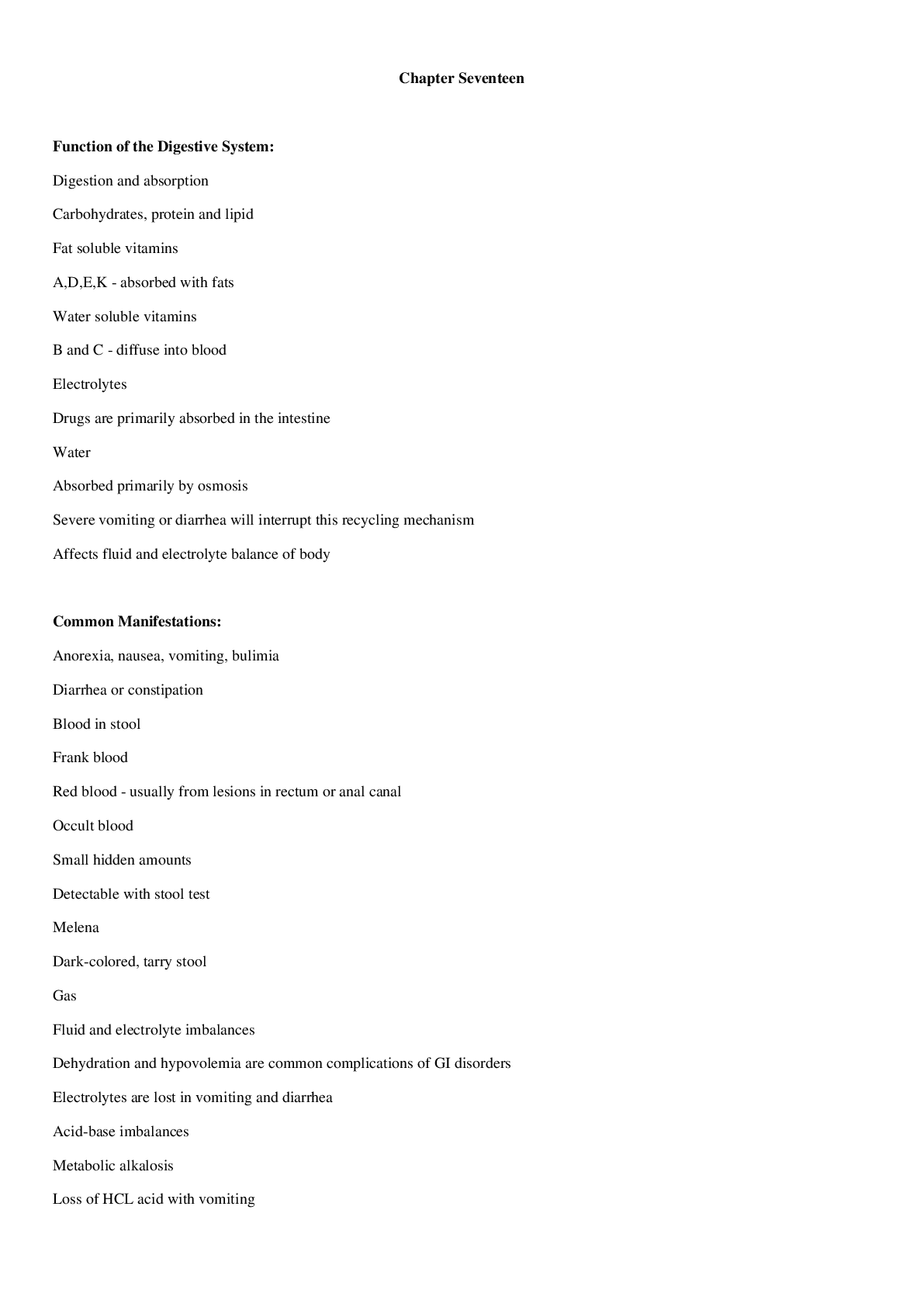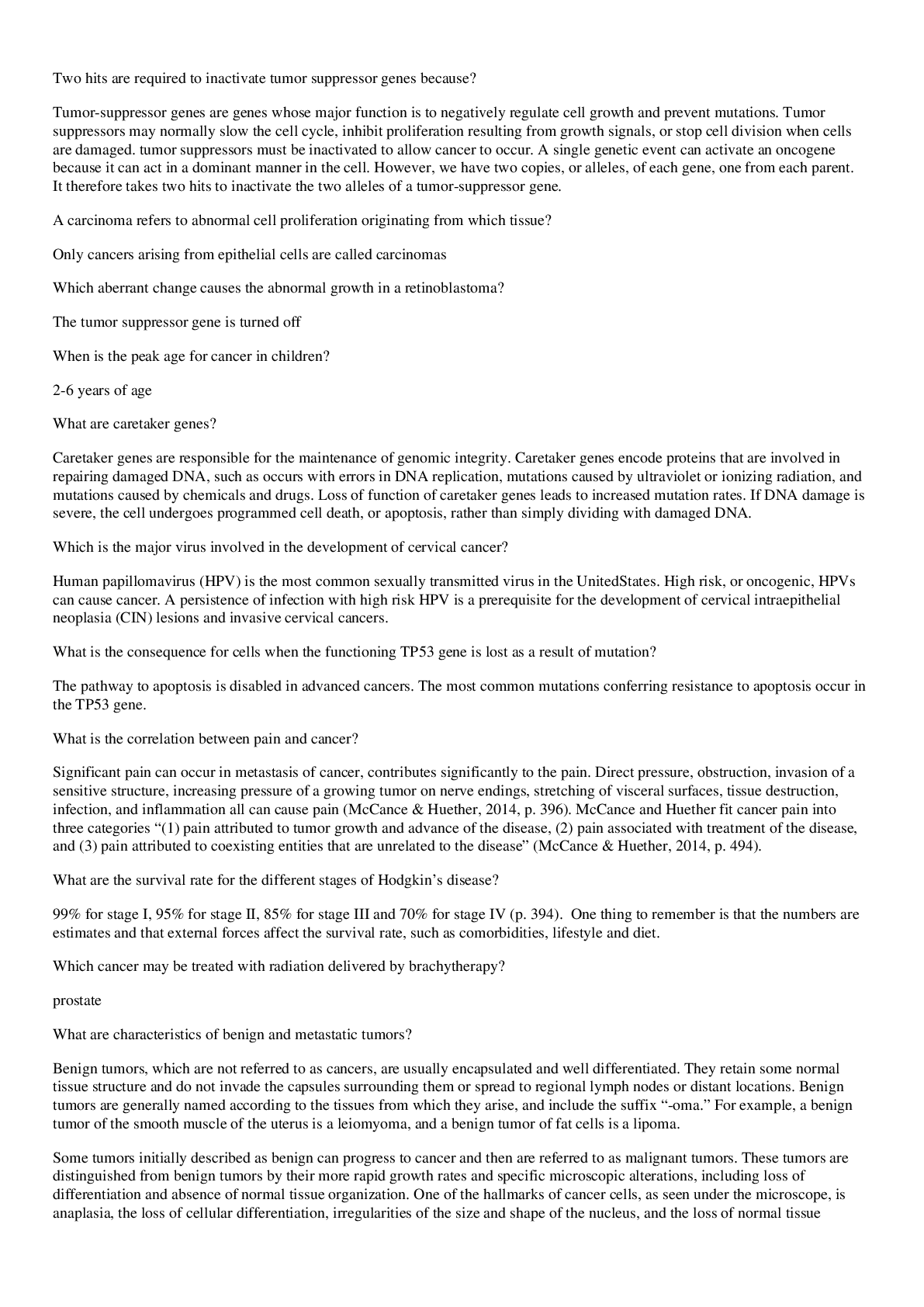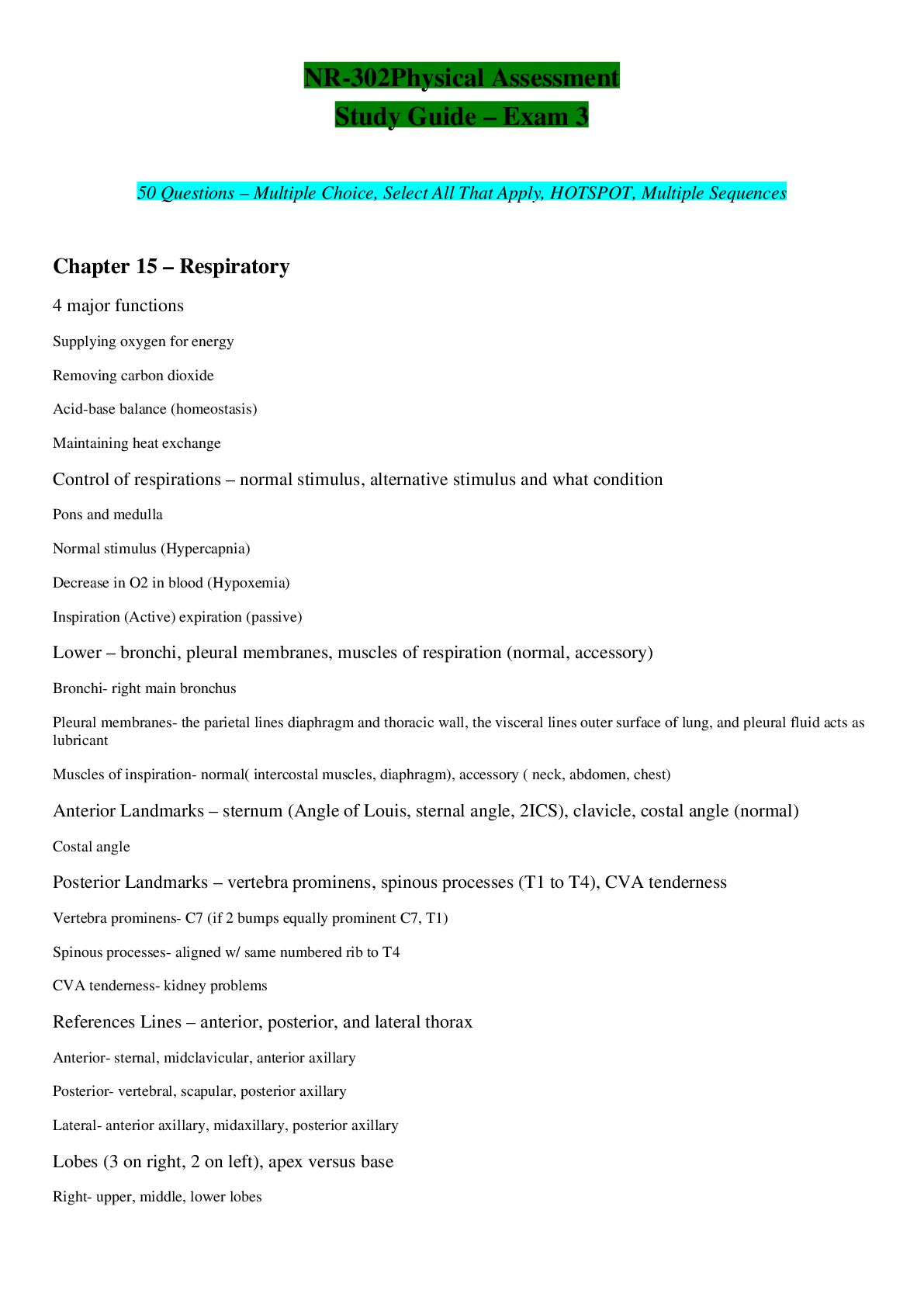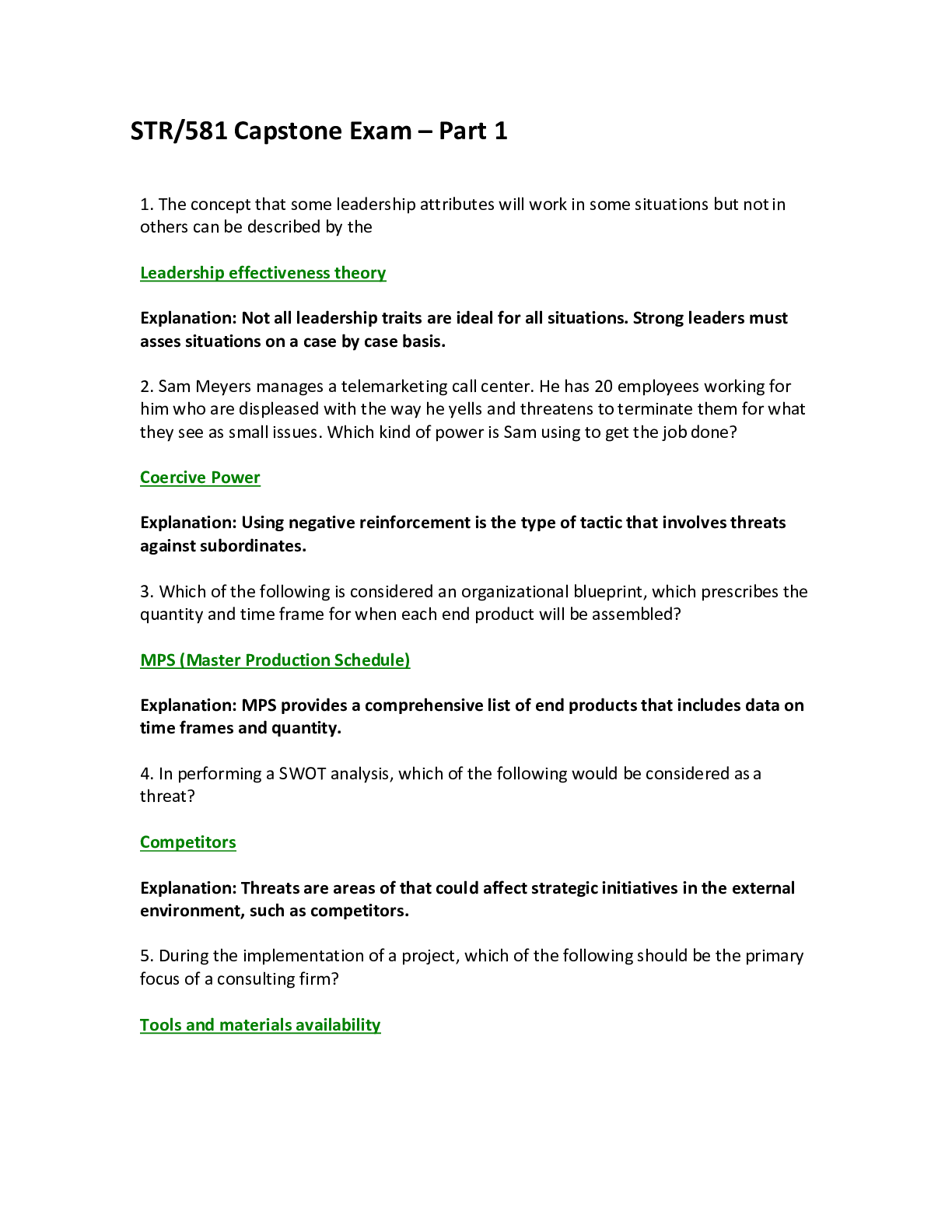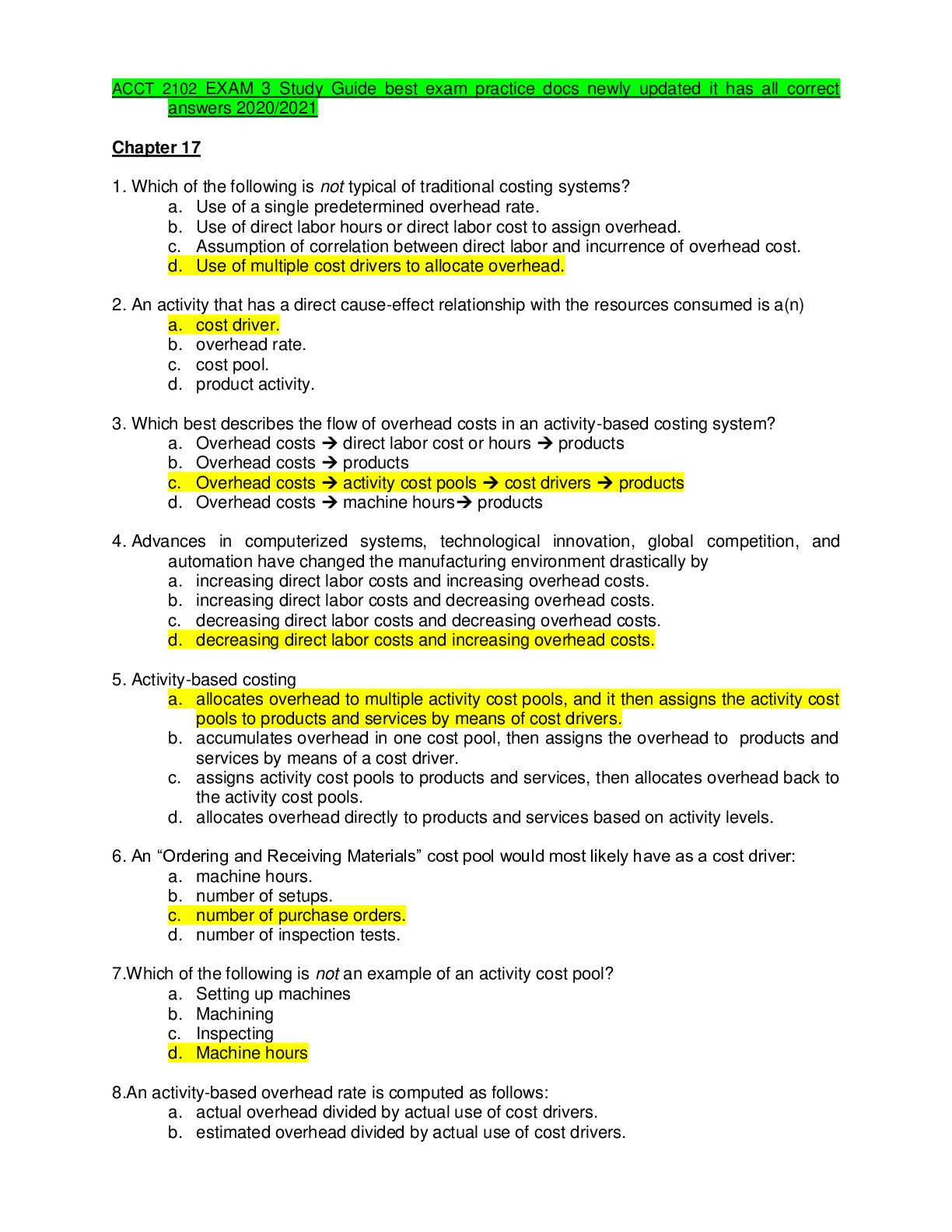*NURSING > QUESTIONS & ANSWERS > Pharm Exam 3 Study Guide – Easy Exam Prep Study (All)
Pharm Exam 3 Study Guide – Easy Exam Prep Study
Document Content and Description Below
Cardiac 1. Digoxin – client teaching, side/adverse effects, normal Digoxin levels and s/s of Digoxin toxicity 2. Potassium levels, considerations and precautions related to levels, and when taki... ng with HCTZ or potassium supplements 3. ACE Inhibitor: lisinopril (Zestril)-client teaching All end in -pril Client Teaching: Monitor BP following first dose. Report dry, non-productive cough is continued for long period. 4. Calcium channel blockers (nifedipine) – client teaching Use: Controls HTN and angina. Dilates coronary arteries, decreases HR, BP. 5. Nitroglycerin – client teaching, side/adverse effects, contraindications Use: Reduce angina. Short acting for acute, long acting for severe recurrent episodes. 6. Beta-blockers atenolol (Tenormin), metoprolol (Lopressor, Toprol-XL) – nursing considerations, side effects 7. Alpha-adrenergic blocker – client teaching (prazosin (Minipress) 8. Heparin – lovenox (Enoxaparin), fragmin (Dalteparin), innohep (Tinzaparin) use, client teaching, normal PTT for client not on/on heparin, nursing considerations, antidote Antidote for heparin is Protamine Sulfate Normal PTT for client not on/on heparin: 9. Coumadin – warfarin (Coumadin) use, client teaching, normal PT/INR for client not on/on warfarin, nursing considerations, antidote Nursing Considerations: Monitor PT/INR levels frequently 10. Lidocaine – indications for use 11. Diuretics – types/examples, timing of dosing, client teaching Timing of Dosing: Give Diuretics in the morning to prevent nocturia Client Teaching: 12. Lipitor – atorvastatin (Lipitor) client teaching, side/adverse effects 13. IV atropine – atropine (Atro-Pen) indication for use, what to monitor for, nursing considerations Respiratory 14. Steroids – client teaching, side/adverse effects, potential effects on CHF, directions specific to inhalers (beclomethasone (QVAR)) 15. albuterol (an adrenergic inhaler) – indication for use, mechanism of action, client teaching Client Teaching: Rescue inhaler should be followed up with maintenance meds. 16. ipratropium (Atrovent) (an anticholinergic) – side effects, client teaching 17. salmeterol (Serevent) – indications for use, timing of dosing, client teaching 18. montelukast (Singulair) – indications for use, directions for use, client teaching 19. guaifenesin (Robitussin) with dextromethorphan or codeine – indications for use 20. theophylline (Theo-24) – side/adverse effects, client teaching NARROW THERAPEUTIC WINDOW 21. Sequences of inhaler use Prime inhaler. Press down to make sure you will get a full spray. Spray about 4 times. 22. metoclopramide (Reglan) – indications for use, mechanism of action 23. promethazine (Phenergan) – side effects/adverse effects with prolonged use 24. ondansetron (Zofran) – use, client teaching, nursing considerations, pregnancy teaching 25. atropine (Lomotil) – side/adverse effects, precautions, contraindications, nursing considerations, know what conditions it may make worse Assess for frequency and consistency of stools and bowel sounds prior to and throughout therapy. 26. MOM – side/adverse effects, precautions, nursing consideration s 27. Management of hyperacidity and constipation in clients with renal failure – best choices for treatment 28. pantoprazole (Protonix), omeprazole (Prilosec) PPI (proton pump inhibitors) – indications for use, mechanism of action, client teaching , timing of dosing 29. OTC antacids and laxatives/stool softeners - client teaching, mechanism of action 30. sucralfate (Carafate) – client teaching, timing of dosing Math – one calculation question involving a bottle of powder that was reconstituted, and how much to give for the ordered dose and concentration available after reconstituted. Practice Question 1: The physician orders cefazolin sodium 0.5g IM every 8 hours. The nurse has to reconstitute from a powder. The vial contains 1g with directions “add 2.5 mL sterile water and shake.” Provides a volume of 3 mL (333mg/mL). How many mL of medication will the nurse administer? ___________________ Practice Question 2: The provider has ordered Rocephin 0.5g IM every 8 hours. The nurse has to reconstitute from a powder, a vial containing 1 g with directions to “add 2.3 mL sterile water and shake to create a 1,000 mg in 2.6 mL solution.” How many mL of medication should the nurse administer? _______________ Practice Question 3: The physician orders cefazolin sodium 0.25g IM every 8 hours. The nurse has to reconstitute from a powder. The vial contains 1g with directions “add 2.5mL sterile water and rotate.” This provides a volume of 3 mL (330mg/mL). How many ML of medication will the nurse administer? ____________________ Answers to practice questions: 1) 1.5mL 2) 1.3mL 3) 0.75ml [Show More]
Last updated: 1 year ago
Preview 1 out of 16 pages

Reviews( 0 )
Document information
Connected school, study & course
About the document
Uploaded On
Apr 19, 2020
Number of pages
16
Written in
Additional information
This document has been written for:
Uploaded
Apr 19, 2020
Downloads
0
Views
301

















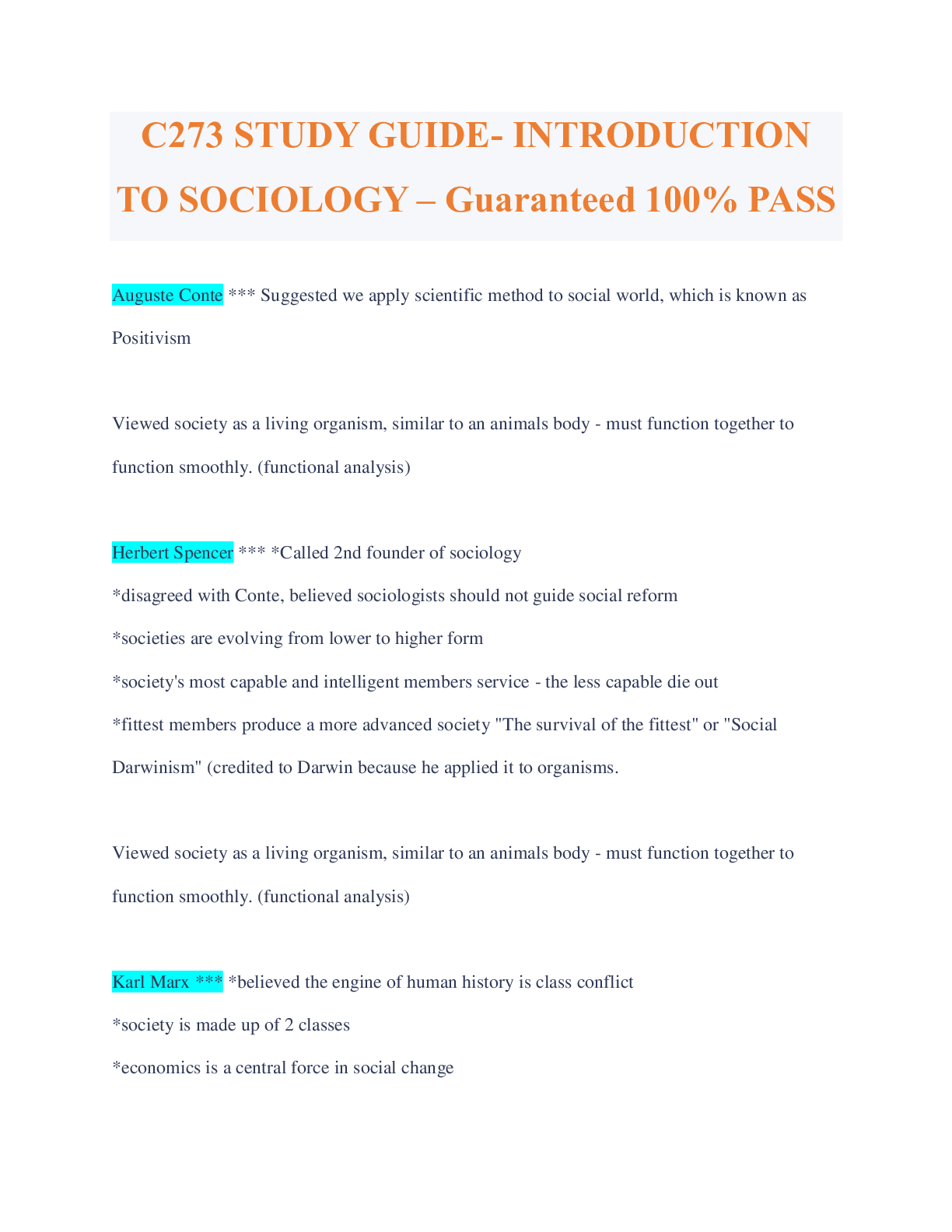
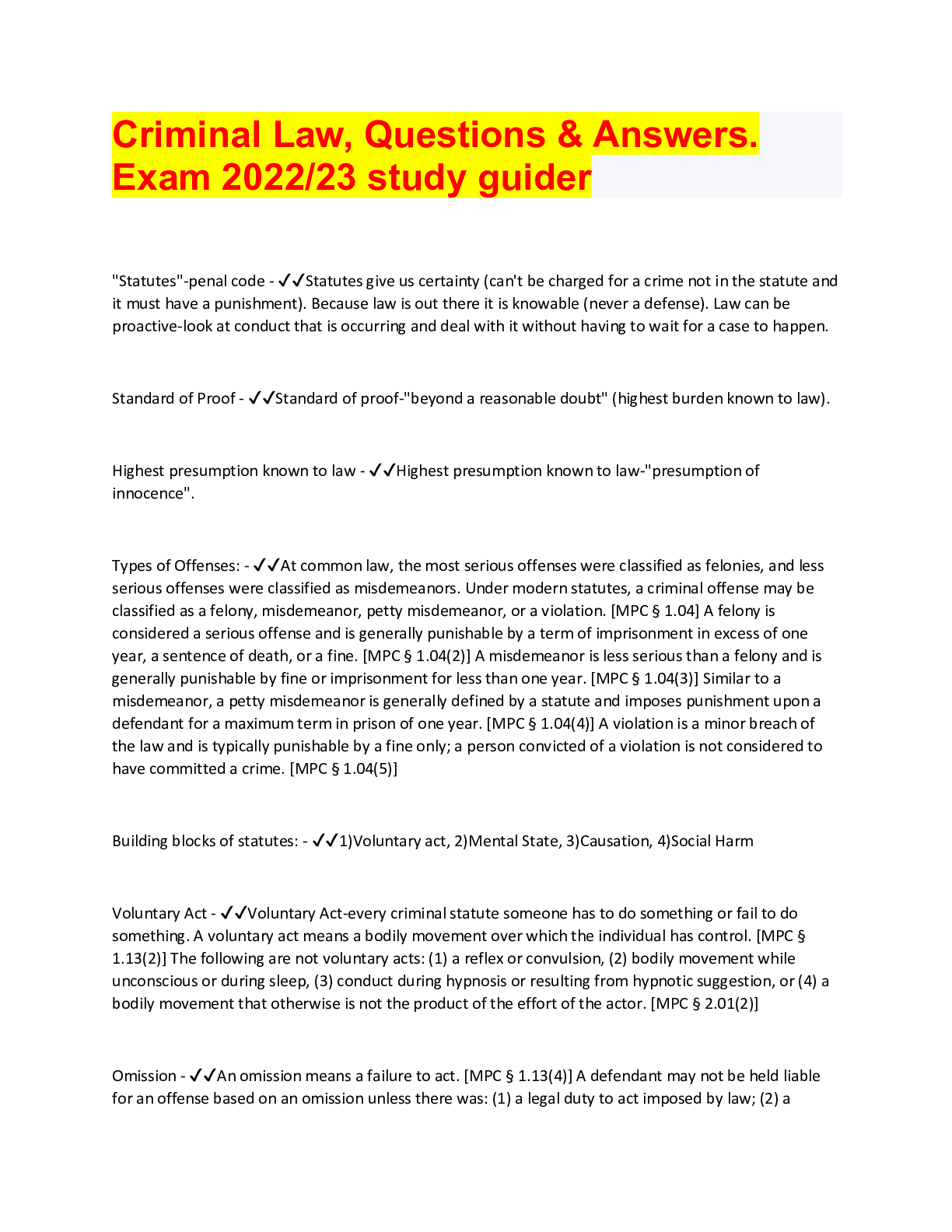
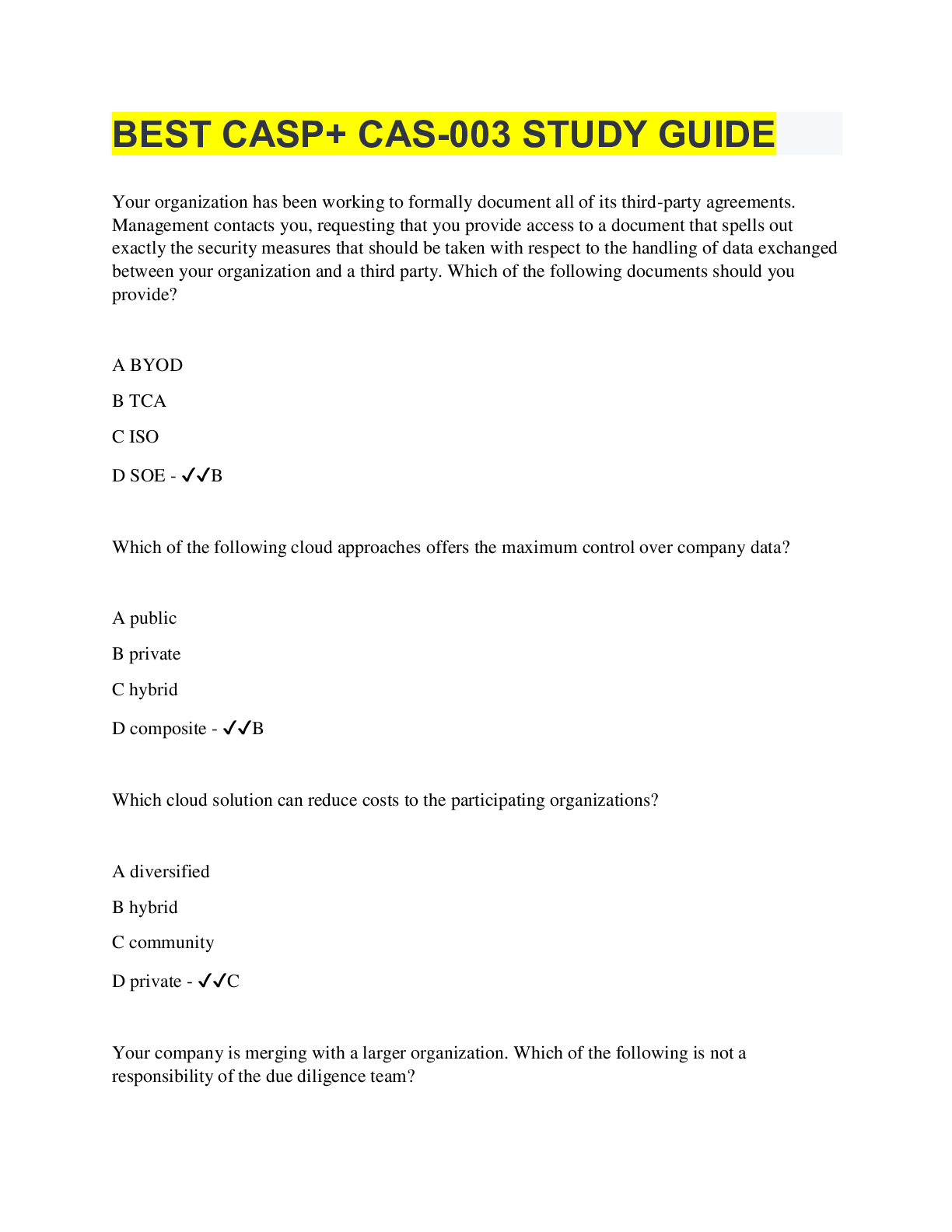
.png)
 (1).png)
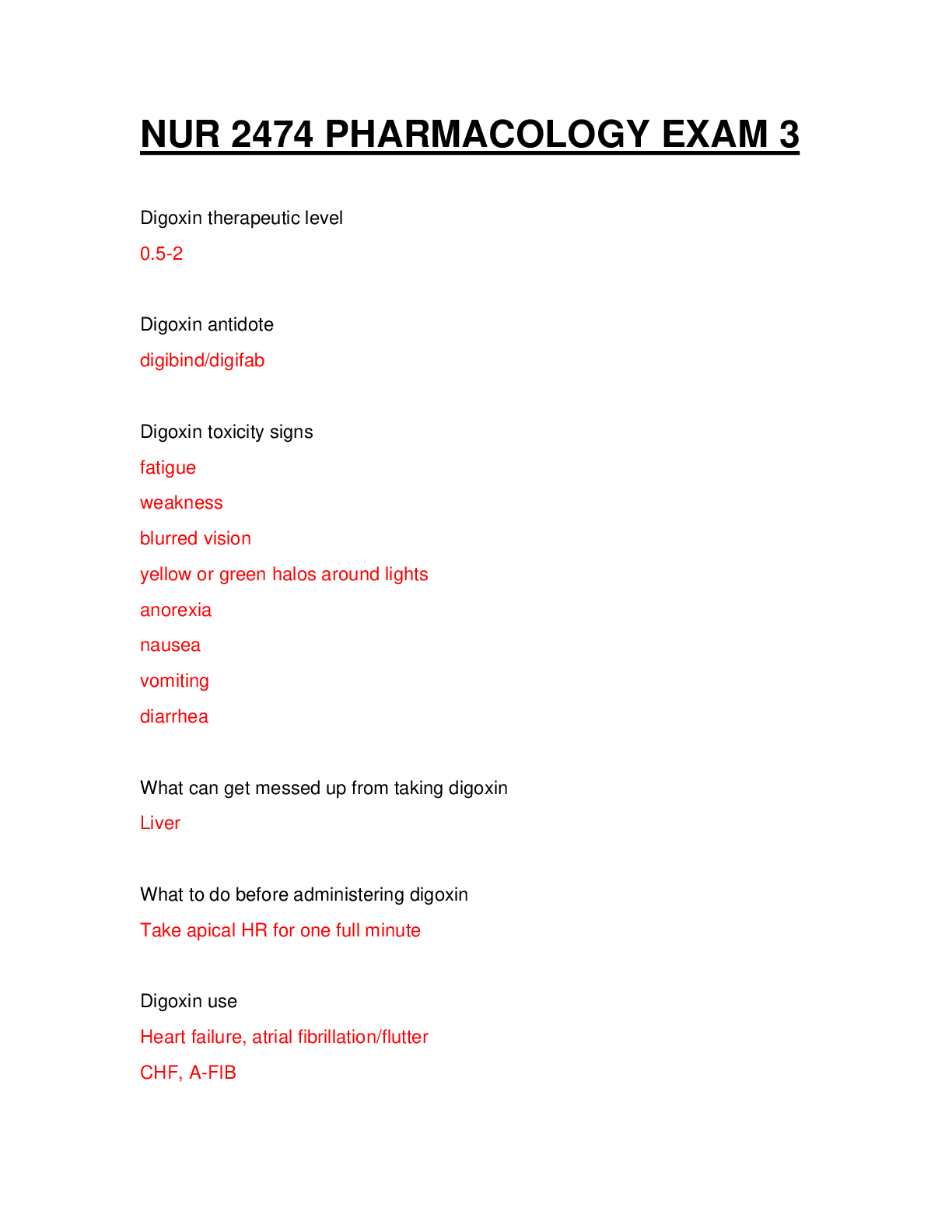

, Latest Questions and Answers with Explanations, All Correct Study Guide, Download to Score A.png)
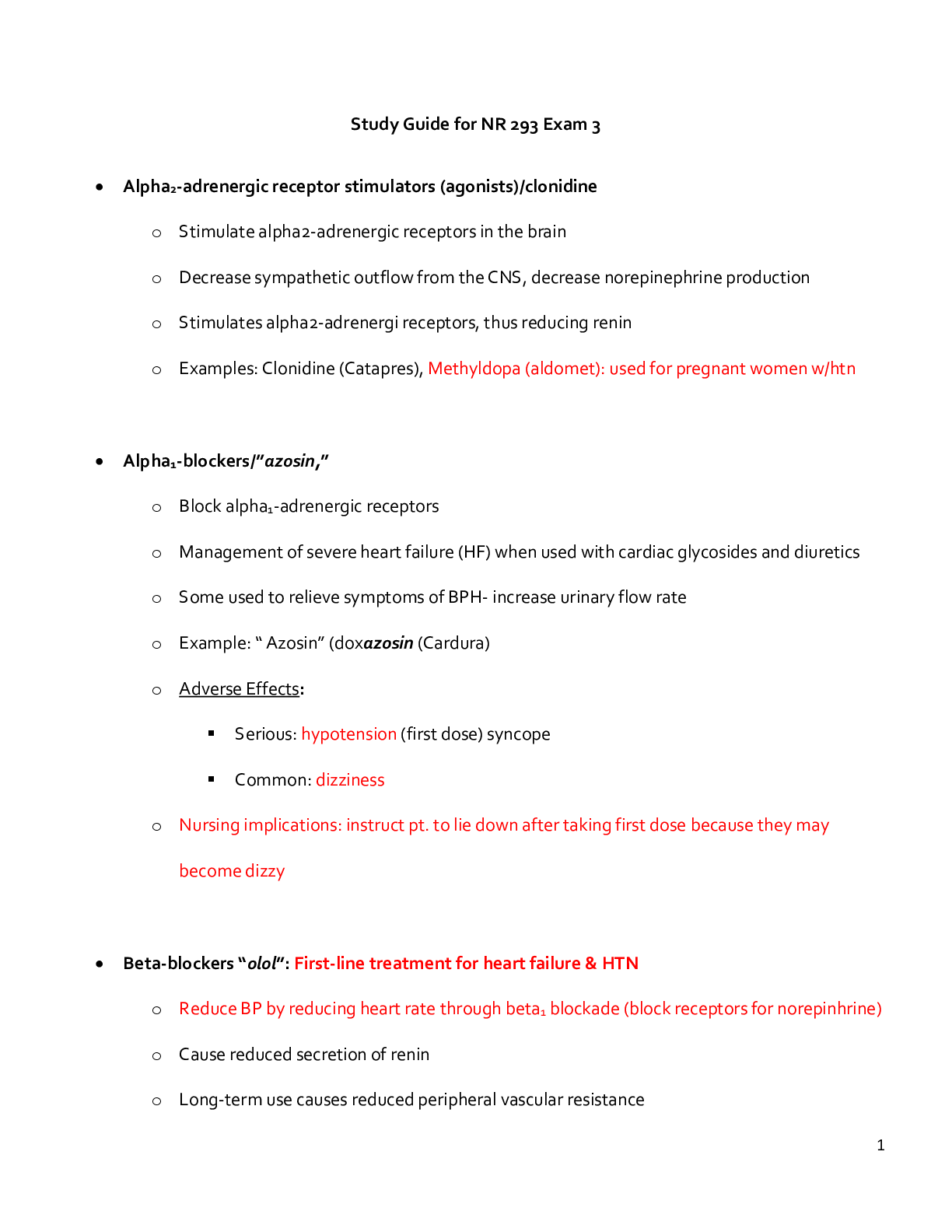

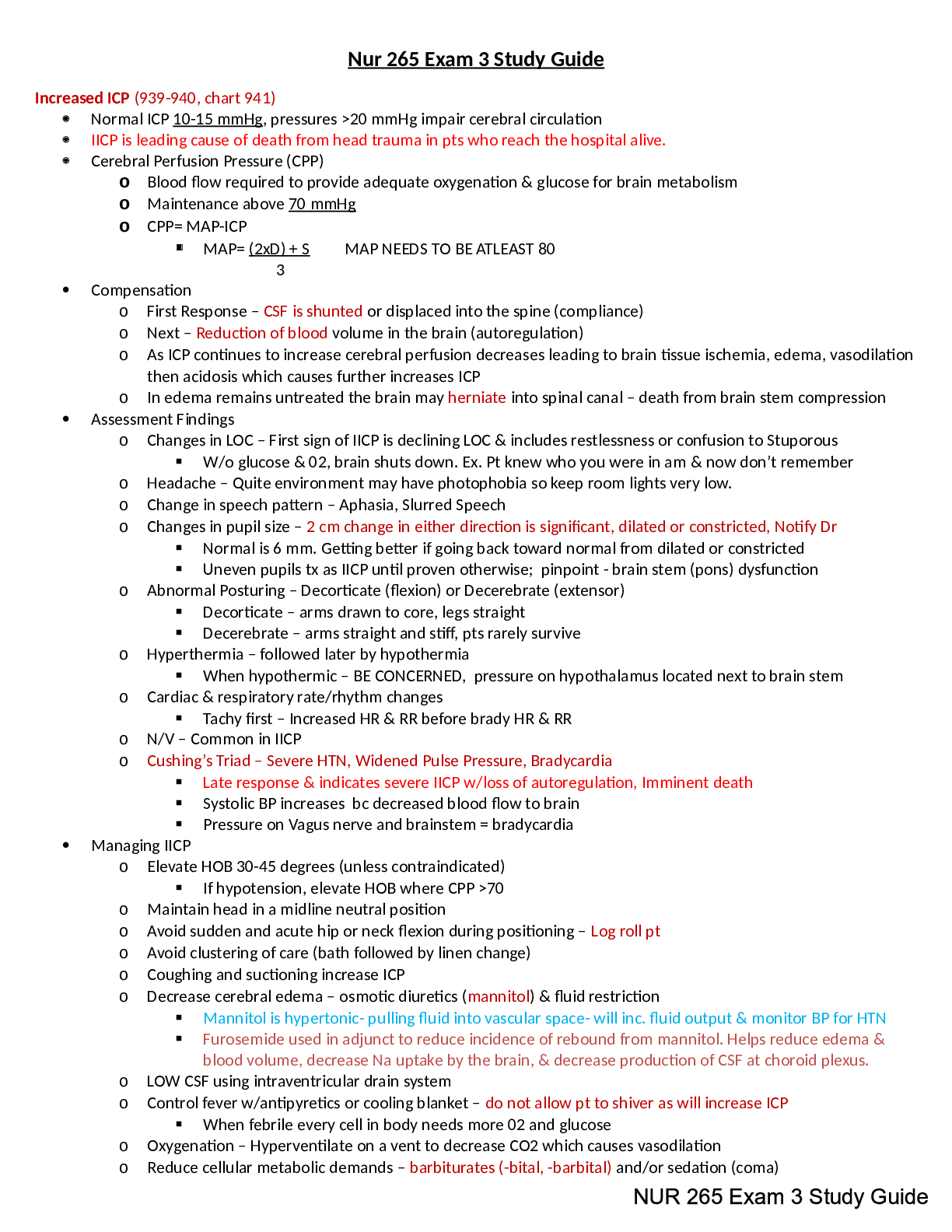
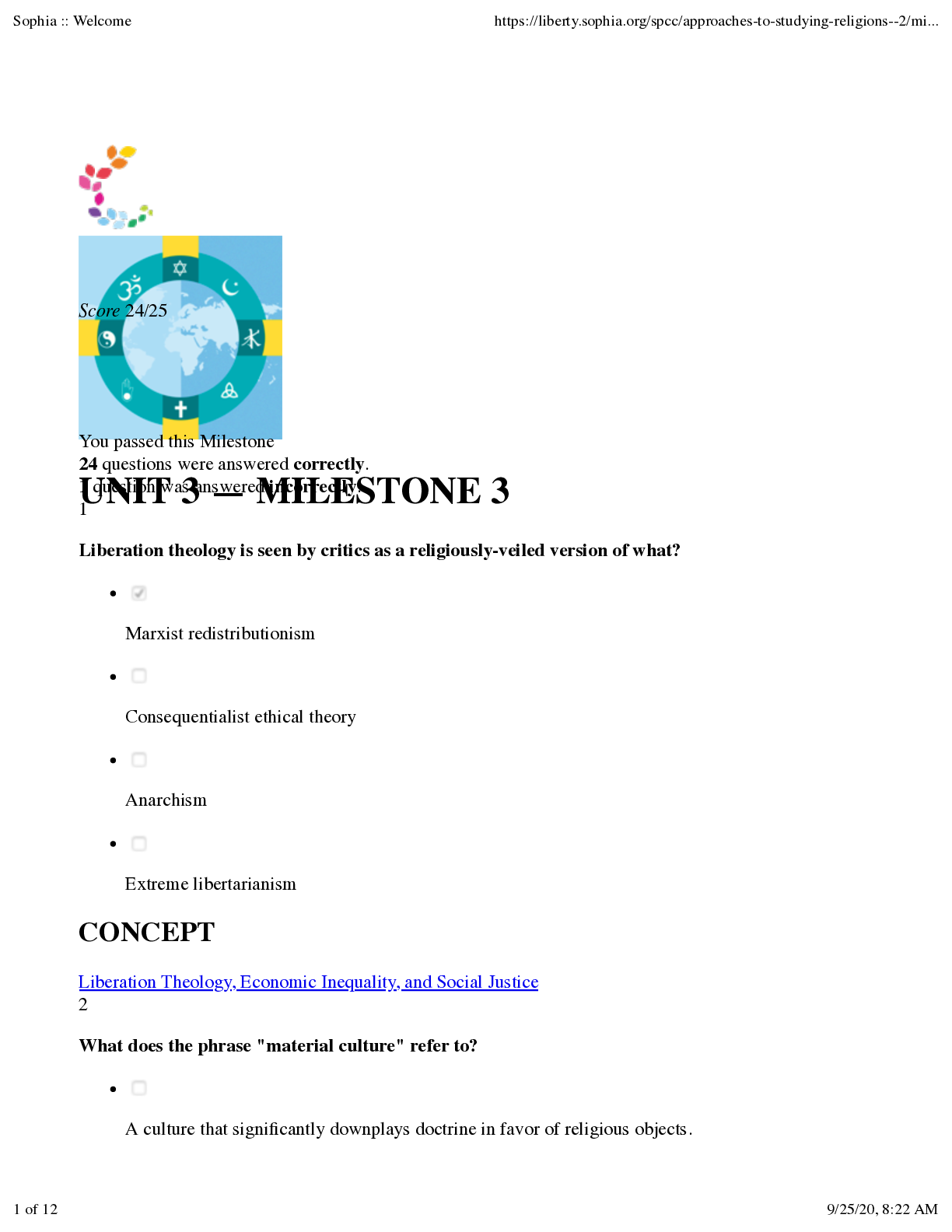
.png)

